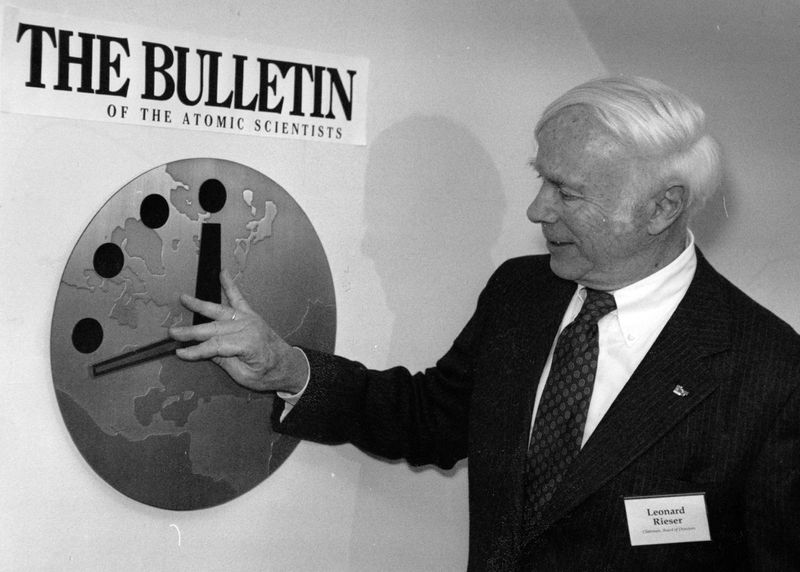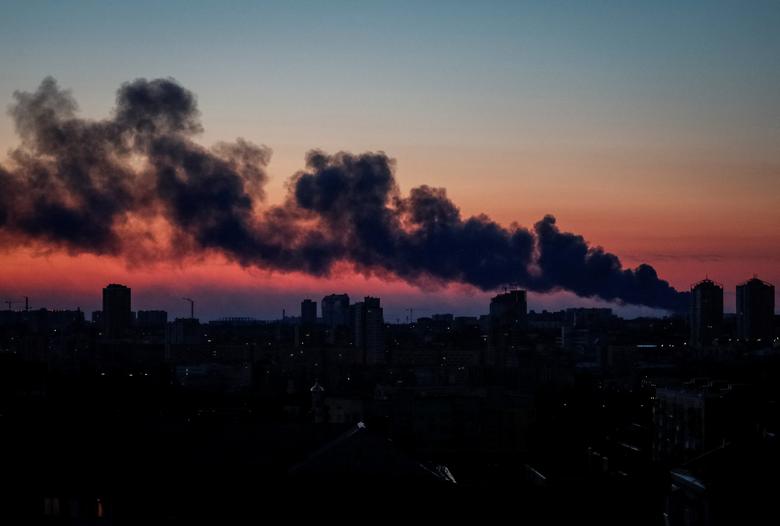The story of how the Doomsday Clock began ticking 75 years ago, the brainchild of a Chicago artist

By Ron Grossman
13 January 2022
(Chicago Tribune) – Martyl Langsdorf designed just one magazine cover, but it has had considerable staying power. A prolific painter of abstract and figurative canvases, she was commissioned 75 years ago by the scientists who built the atomic bomb that ended World War II. By 1947 the Cold War was on, and they wanted to alert Americans to the danger of a nuclear confrontation with the Soviet Union.
They hoped to “frighten men into rationality,” said Eugene Rabinowitch, a biologist and the first editor of the Bulletin of the Atomic Scientists.
To express that objective visually, Langsdorf played with various images.
“The most significant of all was a sketch of a clock, which I made on the 8-by-11-inch back of a bound copy of Beethoven’s Piano Sonatas,” she recalled. “A clock in white paint on the black binding of the Sonatas.”
A clock symbolizes urgency — and her Doomsday Clock did so emphatically by being stripped down to the essentials. A quarter section of a circle with the hours marked by dots, its long hand set at seven minutes to midnight. Its name is a riff on the biblical prophecy of the day the world will end.
In 1949, Rabinowitch advanced the clock’s big hand to three minutes before midnight. The government was downplaying a nuclear explosion detected in the Soviet Union, but Rabinowitch said, “The distant rumbling of the first Soviet atomic bomb shows the world well advanced toward the abyss of an atomic war.”
From then on, the Bulletin of the Atomic Scientists has annually announced if the Doomsday Clock has moved toward or away from disaster. This year’s “reveal” will be performed virtually on Jan. 20.
Robert Rosner hasn’t seen Don’t Look Up, Hollywood’s riff on a doomsday scenario about a pair of scientists who vainly alert the president to a comet headed smack at the Earth.
“I’ve run into that attitude of politicians too often,” said Rosner, outgoing chairman of the board that decides the long hand’s placement. [more]
The story of how the Doomsday Clock began ticking 75 years ago, the brainchild of a Chicago artist


